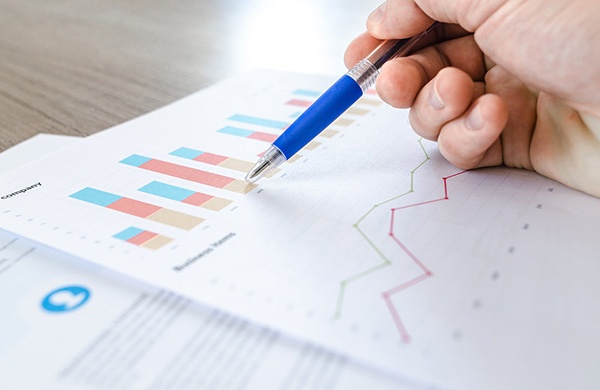In the industry with the largest energy bills and second largest amount of greenhouse gas emissions, most facility and property managers of retail facilities are no stranger to sustainability initiatives. In fact, the Retail Industry Leaders Association’s (RILA) annual sustainability report predicts that by 2015, 70 percent of retail leaders plan to track green house gas emissions, plastic bag use, water use, supplier code of conduct compliance, renewable energy generation and chemicals use1.
A cleaning maintenance program is an often overlooked area where retail facilities can significantly reduce their environmental footprint. From the types of chemicals used to the times when cleaning is performed, reviewing the products and processes used to clean the facility can have significant environmental payoff. Whether you outsource cleaning responsibilities, handle it in-house or have a mixed program that incorporates both, it’s an area of opportunity.
Five key sustainability performance indicators to consider include:
- Chemicals. What types of cleaning chemicals are used in your facility? While some retailers mandate the types of chemicals used to clean their facility, others leave the decision up to the cleaning contractor. Using Green Seal-approved chemicals reduces the amount of pollutants used and helps promote healthy indoor air quality.
In addition to reviewing the types of chemicals, it’s important to properly train employees how to use chemicals. Cleaners often mistakenly think that “more is better” when using chemicals, so training and portion control helps ensure that workers understand how to use the right amount of chemical, reducing overall chemical consumption. It also helps prevent workers from improperly mixing chemicals which can create a safety risk to anyone in the building.
All cleaning operations should also have a comprehensive training program in place, whether it is through a contracted company or in-house staff. As cleaning operations are typically subject to high turnover rates, the program should include training for new hires as well as ongoing training for regular staff. - Water. While water is a necessary component of all cleaning operations, it’s a natural resource that should be monitored and conserved. Many new cleaning technologies limit the amount of water required, such as microfiber. Operations that use microfiber products, including towels and mops, use less water because microfiber cleans more efficiently than cotton. It holds up to six times its weight in water, limiting waste and eliminating the use of heavy buckets associated with traditional mopping systems. In addition to reducing water consumption, microfiber also limits waste due to its durability, as it can withstand up to 500 washings.
Automatic dilution control systems and pre-portioned packets also reduce the amount of water used in cleaning. By eliminating any guesswork associated with dilution ratios, these systems ensure that the exact amount of water and chemical is dispensed into the cleaning solution.
Developing and maintaining a regular cleaning schedule will also limit water use and waste. Regularly cleaning surfaces such as floors reduces the need for frequent deep cleanings, because surfaces stay cleaner longer. - Energy. Although the U.S. Environmental Protection Agency (EPA) introduced the ENERGY STAR® labeling system in 1992, the rating wasn’t available for retail facilities until five years later. Now it’s a system that many retail operations use to help guide their energy reduction efforts.
While there’s no question that cleaning is a labor intensive job, it is also an activity that consumes a lot of energy. Facilities that are not 24-hour operations should evaluate their cleaning program to see if cleaning can be performed at different times of the day to reduce energy use. For example, if it’s possible to schedule light cleaning duties such as dusting or restroom cleaning during the day, this can help reduce the amount of energy used during the evening to keep lights on and heat or cool the building.
Also, conduct an energy audit of the types of equipment used in your cleaning program, or select a partner that can cite examples of reducing energy use in their operations and show an ongoing commitment to reducing energy use in their operations. By regularly updating new equipment and using new technology in the cleaning operation, you can greatly reduce overall energy consumption. - Waste. Retail operations generate a large amount of waste that can easily be eliminated with a few simple strategies. Waste Wise is an EPA program that recognizes organizations that implement successful waste reduction initiatives and helps promote best practices.
From using pre-portioned or pre-packaged chemical dispensing systems to implementing products with recycled content, you can reduce the amount of material in the waste stream and also save money. The EPA highlights a few additional waste reduction management strategies that facility managers should consider:
- Replace wooden pallets with reusable plastic, paper, or metal pallets. (Click here for more information on non-wood pallets)
- Reuse incoming corrugated boxes and packaging materials for outgoing shipments.
- Recycle fiber cores used for shipping paper rolls.
- Recycle polystyrene packaging peanuts.
- Use building materials, such as floor tiles, with recycled content.
- Use EnergyStar energy efficient lighting systems, HVAC systems and other appliances.
- Use the appropriate amount of HVAC and outdoor lighting.2
- Ensure recycling containers and labeling are conducive to waste diversion
- Suggest an annual waste audit to ensure that diversion rates meet industry benchmarks
- Partner Competencies. Just as you want to select the best people for your team, you also want to select the best possible partners for your cleaning operations. Regularly review cleaning product manufacturers, distributors and contractors to ensure that they share your concern for the environment. Select partners that place an importance on sustainability. Look for organizations with LEED-AP certified or ISSA Green Building (GB)-certified individuals on staff and can offer consultations or additional resources, such as staff training, to enhance your sustainability efforts.3
Another way to identify qualified partners is to find organizations with professional affiliations or certifications, such as the Cleaning Industry Management Standard (CIMS) from the International Sanitary Supply Association (ISSA). This demonstrates an organization’s commitment to best practices. Another good indicator of a company’s environmental commitment is a corporate sustainability report. Published annually, this report highlights and shows measurement of an organization’s efforts to reduce their own environmental footprint.
If you have yet to fully incorporate sustainability into your cleaning program, there’s a good chance that leaders within your organization are already considering different options to reduce the overall environmental footprint of your operations. By benchmarking the use of common elements in your program now and identifying a team of qualified partners who can share resources and best practices, you will be ready for any sustainability initiative that comes your way.
About PE Facility Solutions
PE Facility Solutions, LLC, now under the brand Pristine Environments, manages, maintains and optimizes the performance of mission critical facilities for corporate real estate owners in nearly 100 million square feet of specialized buildings throughout North America. With a broad range of experience across an array of industries, including life sciences/cleanrooms, aerospace, datacenters, oil & gas, luxury retail, sports technology & fitness, and commercial real estate, our organization of over 1,000 professionals keeps our customers’ buildings and facilities operating efficiently, sustainably and on budget.
---------------------------------------------
1 http://www.rila.org/sustainability/sustreport2013/sustainability-report‐landing‐page/Pages/default.aspx
2 http://www.epa.state.oh.us/ocapp/retail_p2.aspx
3 http://www.usgbc.org/leed/credentials/leed‐ap/overview



